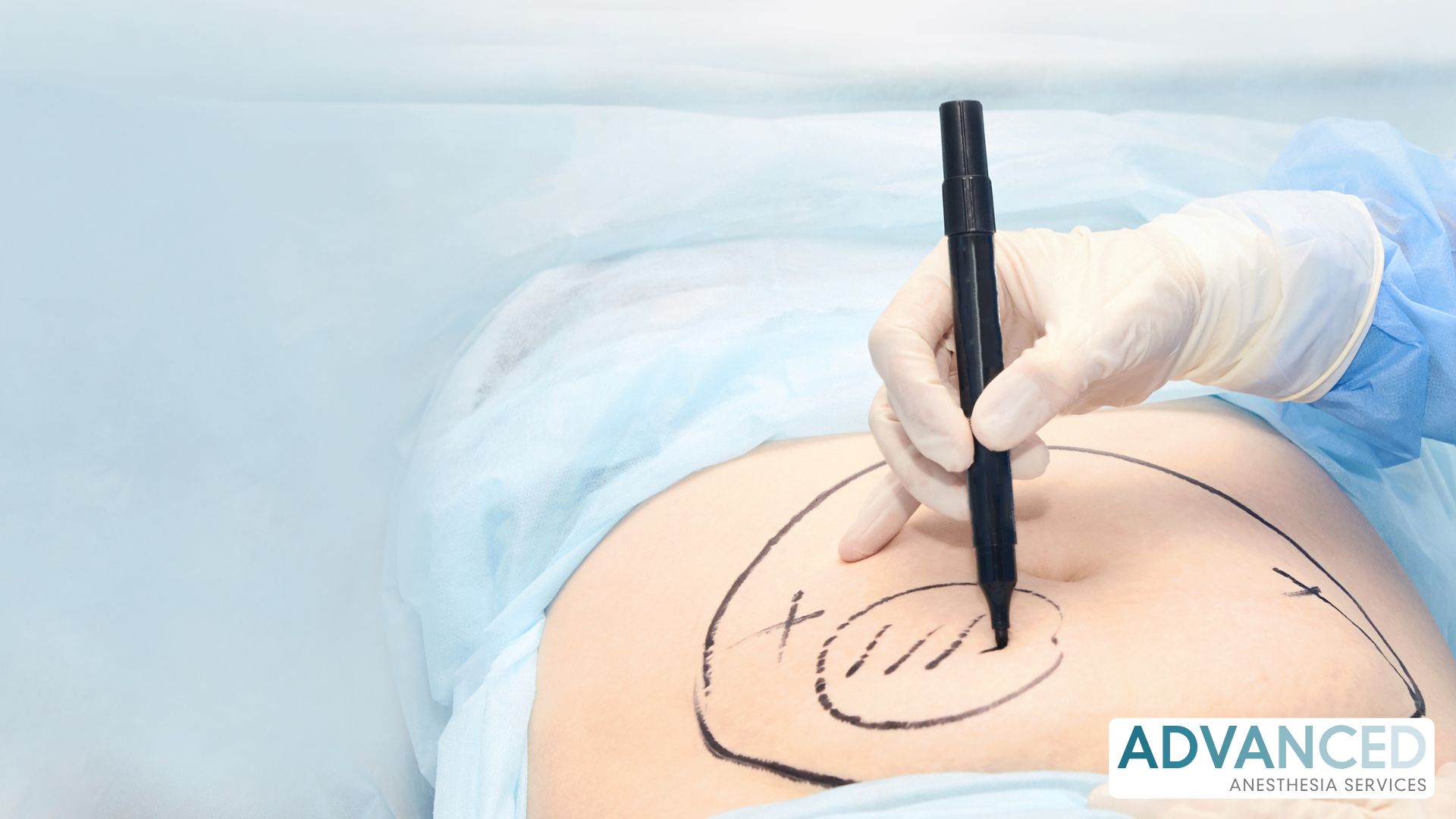
Liposuction performed in office-based surgical suites has become increasingly common due to patient demand, cost-effectiveness, and streamlined scheduling. However, despite its convenience, liposuction carries serious risks, including fluid shifts, airway obstruction, lidocaine toxicity, and postoperative thromboembolism. In settings with limited emergency resources, maintaining high safety standards is essential. Propofol-based deep sedation, administered by a Certified Registered Nurse Anesthetist (CRNA), can enhance procedural efficiency and patient comfort, provided it is implemented within a strict safety framework. This guide outlines a structured protocol for office-based liposuction under propofol sedation, aligned with recommendations from AAAASF, AORN, and the Society for Office Anesthesia Practice Certification (SOAPC).
Appropriate patient selection is critical for minimizing perioperative risk. Office-based liposuction is generally suitable for patients with a body mass index (BMI) of 35 or below, an ASA physical status classification of I or II, and planned fat removal volumes of less than four liters. Patients with uncontrolled comorbidities, complex medical histories, or higher anesthesia risk factors should be treated in an accredited ambulatory surgery center or hospital-based setting.
Preoperative screening should also include a review of medications, allergies, airway assessment, and potential contraindications to propofol or lidocaine. The total planned dose of lidocaine must be calculated in advance to remain within safe systemic limits, ideally under 35 mg/kg.
A fully stocked anesthesia cart should include vasoactive agents (such as phenylephrine and ephedrine), anticholinergics, ketamine, and a 20 percent intralipid emulsion for local anesthetic systemic toxicity (LAST) emergencies. Monitoring equipment must include a five-lead ECG, pulse oximeter, non-invasive blood pressure cycling every two minutes, and end-tidal CO₂ monitoring via nasal cannula.
The operating room should also be equipped with a propofol infusion pump or TCI (target-controlled infusion) device, a tiered rescue airway kit (including oropharyngeal airways, supraglottic devices, video laryngoscope, and bougie), and warmed intravenous fluids to maintain normothermia.
Induction is typically achieved with a propofol bolus dosed at approximately 0.8 mg/kg, followed by a maintenance infusion between 75 and 125 µg/kg/min. Adjunctive ketamine, administered at 0.3 mg/kg prior to incision, can provide opioid-sparing analgesia and hemodynamic stability. Sedation depth should allow for verbal arousability and maintenance of spontaneous ventilation.
The lidocaine dose absorbed systemically from tumescent infiltration must be tracked and displayed prominently to prevent overdose. A lipid rescue protocol should be immediately accessible.
A structured ten-point safety checklist should guide intraoperative care, including verification of planned volumes and lidocaine totals, real-time monitoring of vital signs and infusion rates, core temperature maintenance, and timely documentation of fluid inputs and outputs.
Proactive planning for emergence begins 30 minutes before closure. This includes tapering the infusion, re-evaluating lidocaine totals, and initiating deep-pressure assessments to ensure contour symmetry.
Propofol administration should cease at the time of final skin closure or dermabond application. Most patients should awaken within six minutes. Supplemental oxygen should be provided via nasal cannula until oxygen saturation stabilizes above 94 percent.
Discharge criteria should follow the Modified Post-Anesthesia Discharge Scoring System (PADSS), ensuring patients can ambulate independently, tolerate oral intake, and maintain adequate pain control with oral medications.
Staff should be trained to recognize early signs of common complications, including LAST, hypothermia, hypotension, and fat embolism. Each of these events requires immediate intervention, ranging from intravenous fluid warming to airway support and lipid emulsion therapy. Emergency transfer protocols must be in place for all office-based cases.
Patients should be instructed to wear compression garments continuously for 72 hours, followed by 12 hours per day for four weeks. Ambulation is encouraged within two hours of returning home, and sequential compression devices may be considered for higher-volume liposuction cases.
Each patient should be provided with an anti-nausea medication and contacted within six hours to check for complications, including pain, bruising, or fluid imbalance. A follow-up photo at 48 hours can help assess recovery and inform future quality assurance reviews.
Office-based liposuction can be both efficient and safe when delivered within a carefully designed clinical protocol. Thorough preoperative screening, diligent intraoperative monitoring, and well-defined discharge standards are critical components. CRNAs trained in deep sedation, emergency airway management, and LAST recognition play a central role in maintaining patient safety.
Clinics looking to enhance their liposuction offerings should consider implementing a standardized checklist and partnering with CRNAs experienced in high-acuity office procedures.

